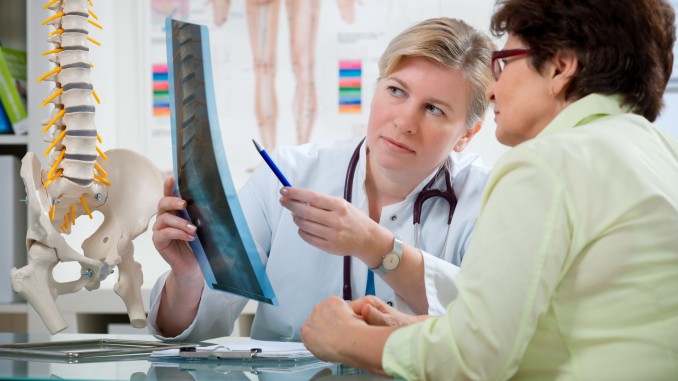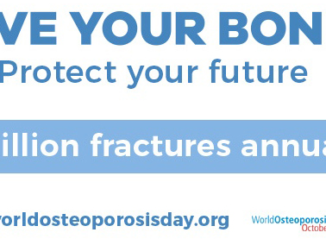
We’ve long known that being a woman significantly increases your chances of developing osteoporosis and the associated health risks. In fact, of the estimated 10 million Americans who suffer from osteoporosis, eight million (or 80%) are women. Unfortunately those numbers are set to rise, and by 2020, one in two Americans over the age of 50 are expected to develop osteoporosis, the majority of which will be women. To avoid adding to these statistics, we need to understand more about osteoporosis.
What is osteoporosis?
First, we need to understand what exactly osteoporosis is. The term quite literally means “porous bone,” as a result of the appearance. The bone disease is characterized by low bone mass (as a result of the the body not making enough or losing too much) and a deterioration of bone density that results in fragile, brittle bones. The weakening of bones means that they are more likely to break when a person falls, but in very serious cases, a sneeze could be all that it takes. It can be a result of genetics, a deficiency in calcium or vitamin D, or hormonal changes.
World Osteoporosis Day (WOD) takes place every year on October 20, launching a year-long campaign dedicated to raising global awareness of the prevention, diagnosis and treatment of osteoporosis and metabolic bone disease.
Why does it affect women more?
Now that we understand what osteoporosis is, it is equally important to understand why it affects such a significant number of women. While women do generally have smaller and thinner bones when compared to men, making them particularly susceptible to this disease, it is actually hormonal issues that play a key factor here. Osteoporosis begins earlier in women and worsens faster because of hormonal shifts that begin as a result of menopause. Estrogen, in particular, decreases significantly when women reach this stage in their lives, and this can be the culprit behind the resulting bone loss.
What can be done?
While osteoporosis is a serious disease that women in particular need to be aware of, there are many preventative steps that can be taken. The stronger and healthier you keep your bones with an active lifestyle and good nutrition – particularly an adequate intake of calcium and vitamin D, the less likely it will be for the disease to develop. You can also schedule bone density testing with your healthcare insurance provider and undergo estrogen therapy closer to, or during menopause. It is always better to be safe than sorry, and these preventative approaches are much better alternatives than dealing with the serious consequences of osteoporosis.
While osteoporosis is a very serious bone disease that can significantly impact your quality of life, it doesn’t need to become a reality. By educating yourself on the condition, being physically active and eating well, as well as focusing on preventative medical approaches, you can keep both you and your bones healthy and happy.


Be the first to comment